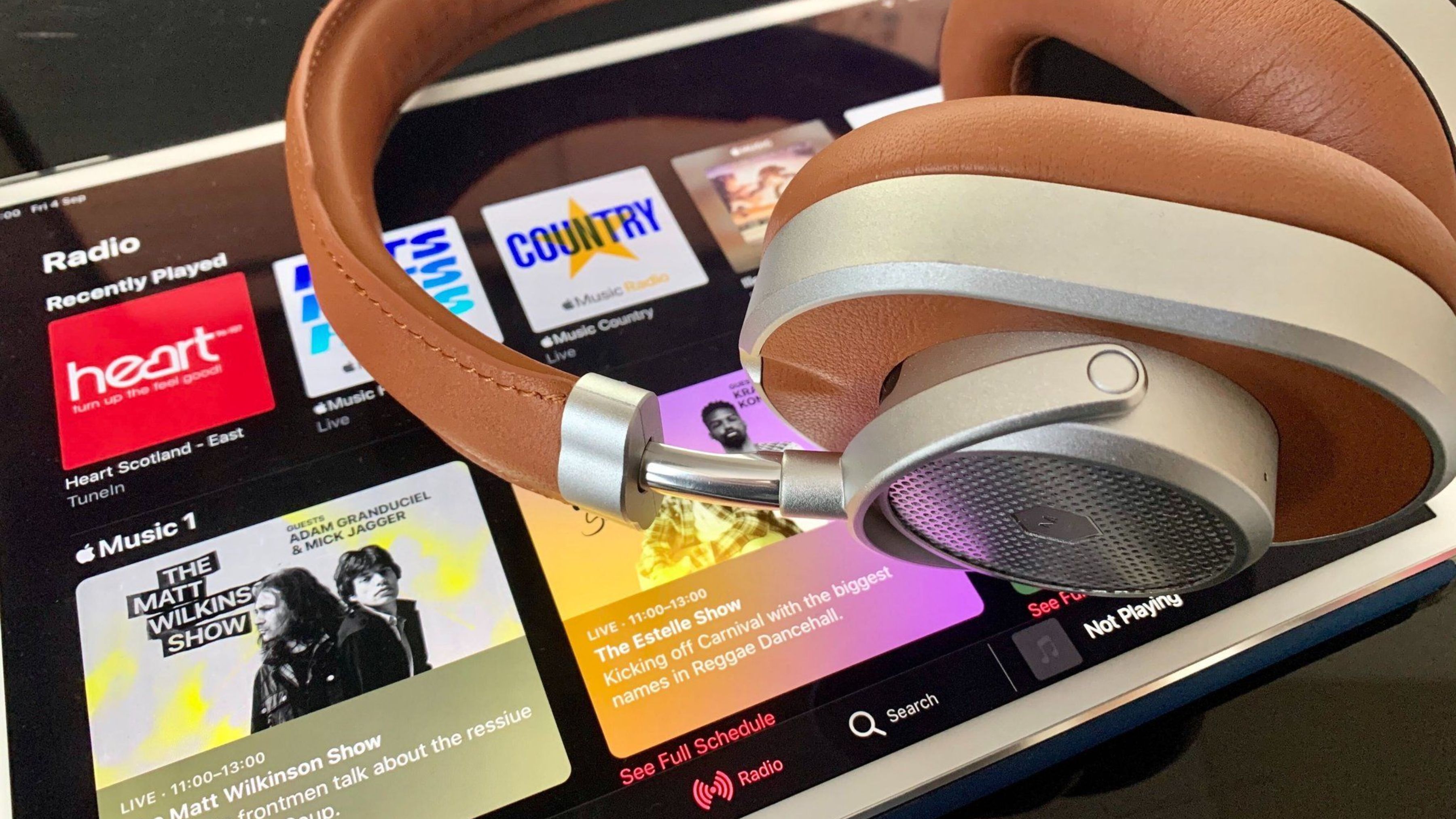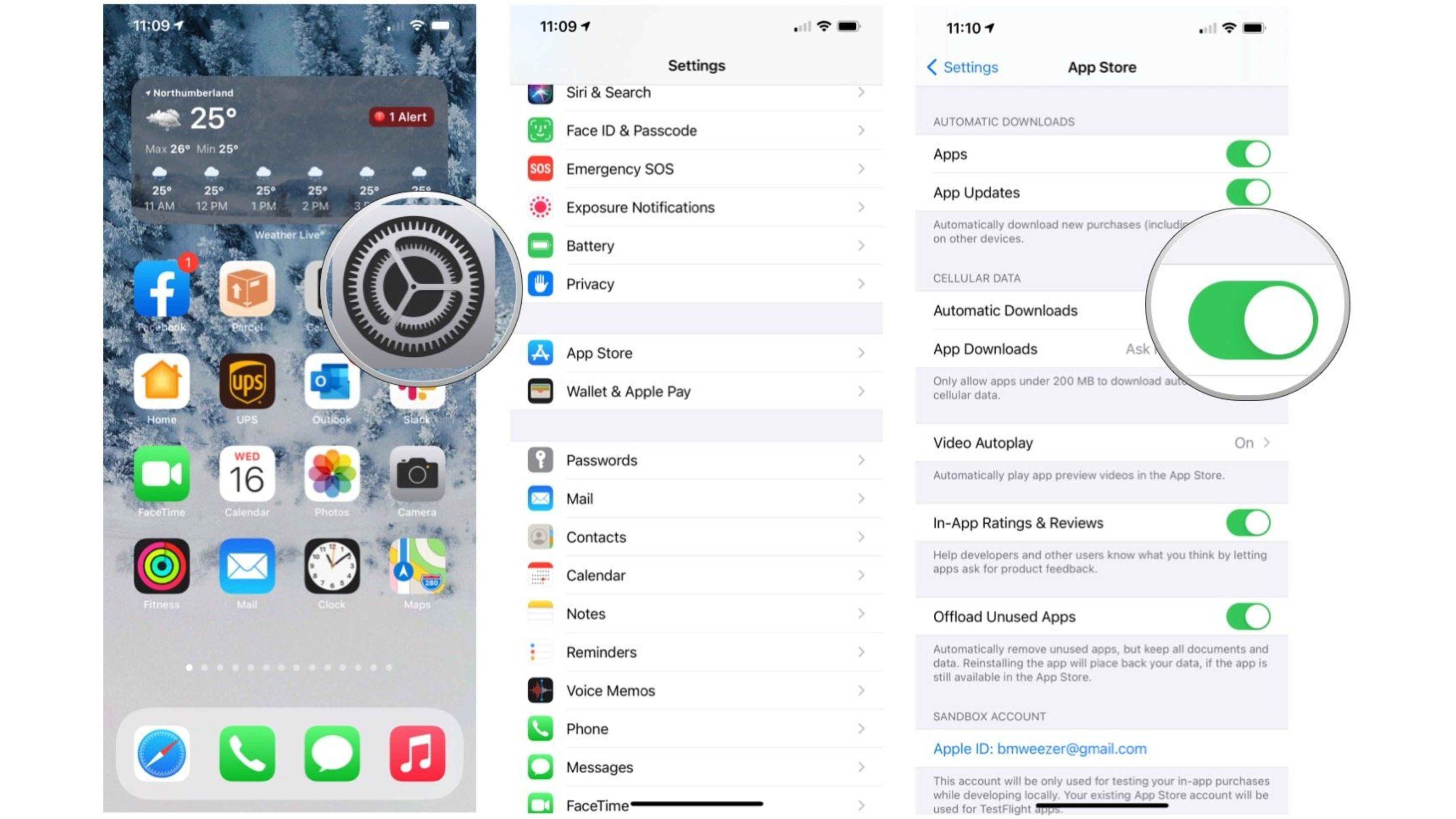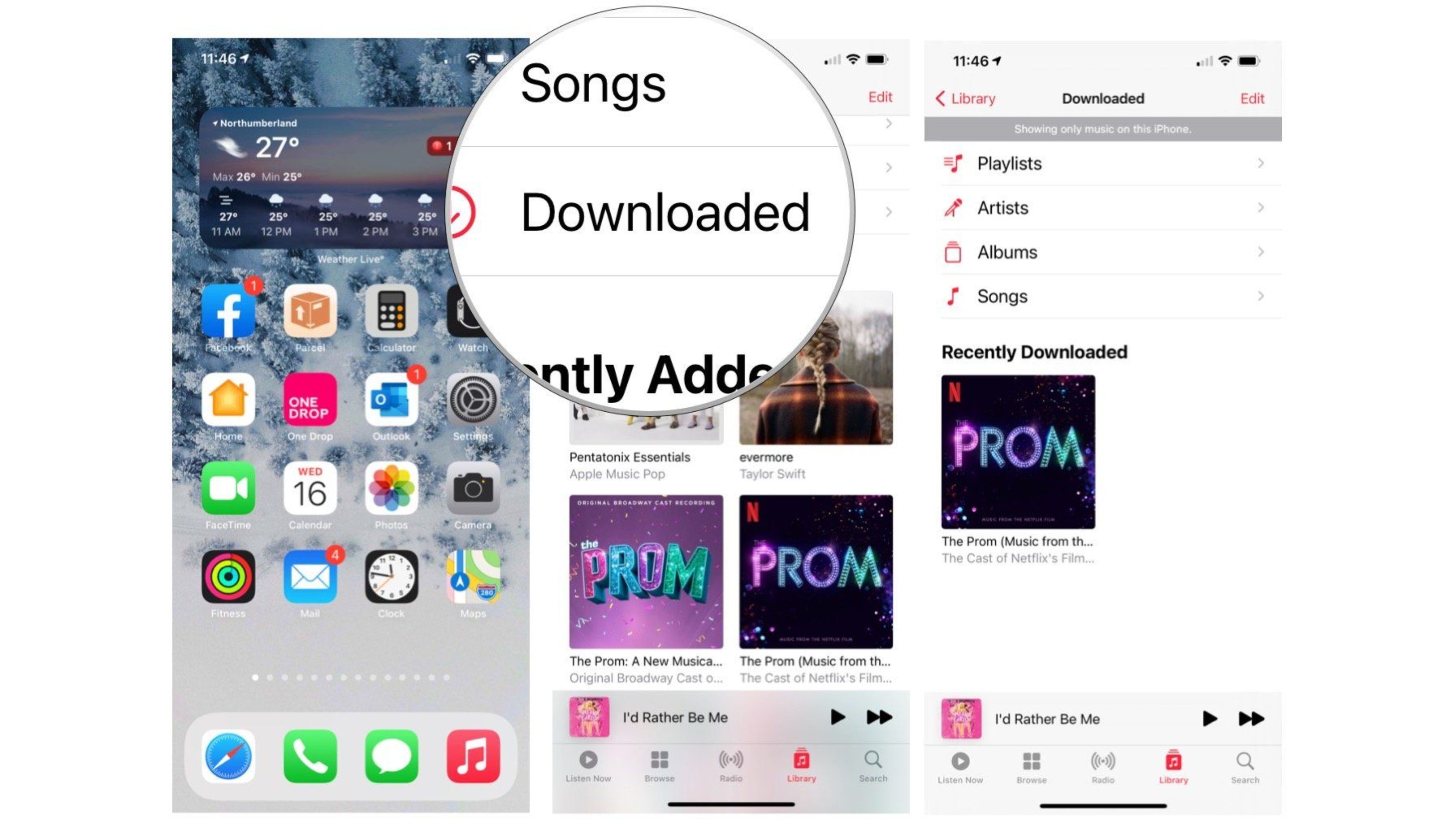Everything you need to know about iCloud Music Library

iCloud Music Library is Apple's service for storing your personal music library online by "matching" your tracks to songs listed on the iTunes Store (or uploading tracks directly, if there's no match available). You can then stream and download them — DRM-free — to up to ten other registered devices in your possession.
If you subscribe to Apple Music, you'll get iCloud Music Library included as part of your $9.99 monthly subscription; otherwise, you can subscribe to Apple's iTunes Match service and pay $24.99 a year to store your iTunes library (up to 100,000 songs) in iCloud.
Are you looking for a new gadget to listen to your tunes? Check out our recommendations for the best iPhone!
Here's how iCloud Music Library works, how you can subscribe, and how you can get the most out of it!
How iCloud Music Library works

Here's how iCloud Music Library works, how you can subscribe, and how you can get the most out of it!
What is iCloud Music Library?
It's Apple's term for all the music you've stored in iCloud.
Wait, stored? Does it count toward my iCloud storage cost?
Nope. You can store up to 100,000 songs with an Apple Music or iTunes Match subscription; it doesn't count toward your iCloud storage costs.
Does it work with Apple Music and iTunes Match?
Yup, both the Apple Music subscription service and the stand-alone iTunes Match option. iCloud Music Library lets you upload or "match" your personal music library with the DRM-free iTunes Store catalog.
If you have an Apple Music account, you can take advantage of iCloud Music Library and subscription music; if you have a stand-alone iTunes Match subscription, you only have access to your iCloud Music Library.
- Apple Music vs iTunes Match: What's the difference?
- Do I still need iTunes Match if I have Apple Music?
- iTunes Match: The ultimate guide
What's the deal with matching, storing, and the like?
When you subscribe to Apple Music or the standalone iTunes Match service, Apple scans your iTunes music library to check and see which tracks you own are also listed in the iTunes Store.
To save space and upload time, any track in your library that's also available in the iTunes Music Store catalog will "match" to the catalog version; this means that when you play that track on your iPhone or another Mac, you'll get the iTunes Music Store version (a DRM-free, 256kbps-quality AAC file, for those wondering), rather than your original file. Apple uses metadata matching and audio fingerprinting to match your songs to iTunes Store versions. It's not perfect, and you may run into issues with live or rare tracks matching to studio versions — for most users, however, you should be able to use the service without any problems.
iMore offers spot-on advice and guidance from our team of experts, with decades of Apple device experience to lean on. Learn more with iMore!
Any songs that don't match to the iTunes catalog will be uploaded to iCloud in their original form, save for tracks that are too low-quality (under 92kbps), too long (over two hours), too big (over 200MB), or you aren't authorized to play (say, a song from another user's iTunes account that you don't have the username and password to unlock).
If you have a song in your library encoded in ALAC, WAV, or AIFF, those may be transcoded into an AAC 256 Kbps file when uploaded to iCloud; the original file in your iTunes library won't change.
After your songs are uploaded, they get stored or matched to your iCloud Music Library; any device you own (up to 10) can stream or download songs back from it.
Note: Currently, you'll need an iTunes library with 100,000 songs or less in it for iCloud Music Library to work correctly; if you have too many songs, here's how to create a secondary iTunes library.
What does iCloud Music Library get me?
A bunch of things! Access to your Mac's library on any of your other devices (up to 10), for one.
If you're an Apple Music subscriber, it also allows you to add songs and playlists from the subscription catalog to your library; you can then save those tracks for offline play.
Do I need a backup before enabling iCloud Music Library?
Yes. Yes, yes, yes. iCloud Music Library may give you copies of your songs in the cloud, but it is in no way a backup service. So please, heed our warning: Make sure you have a complete, local copy of all of your music on your primary computer (or external hard drive) before turning on iCloud Music Library.
If you've already enabled it and you don't have all your music locally on one computer, don't panic: Make sure your music shows up as Matched or Uploaded and not Apple Music, then download all the tracks you're missing to your main Mac.
Why shouldn't I use iCloud Music Library?
If you don't have a backup of your Mac's library, have lots of tracks with crazy metadata that you're worried iCloud will mess up or don't want to save songs offline from Apple Music, you probably should leave iCloud Music Library turned off.
Can I still use Apple Music without iCloud Music Library?
You bet. You can even use iCloud Music Library with some devices and not others. More info here:
You bet. You can even use iCloud Music Library with some devices and not others. More info here:
I turned on iCloud Music Library, and it ate my library/destroyed everything — aghhhh! Help?!
Deep breaths. Do you have a backup? If so, turn off the iCloud Music Library on your Mac and restore your library from that file.
If you don't have a backup, there are other things you can try, from chatting with Apple Support to resetting your iCloud Music Library. We suggest checking out our Apple Music troubleshooting guide.
What you can and can't do with iCloud Music Library

Now that we've explained what iCloud Music Library is, here's a quick rundown of what it can and can't do.
With iCloud Music Library, you can...
- Stream your Mac's library to up to ten different devices you own (including up to 5 Mac or Windows PCs).
- Delete matched tracks you own on your Mac and redownload them to get high-quality 256kbps DRM-free versions from the iTunes Store (useful if you have low-quality ripped tracks).
You can't...
- Manually sync music from iTunes to your iPhone: It's all done over the air now.
- Use your iCloud Music Library with Family Sharing: Each Apple ID (and their iCloud Music Library) is separate; you can download any purchases from iTunes, though.
- Match or upload more than 100,000 tracks from your library that weren't purchased from the iTunes Store: If you still want to use iCloud Music Library but have too many tracks, make a secondary iTunes library.
- Use it in every country: Here's Apple's list of supported countries for iCloud Music Library.
Note: If you're only using the $24.99/year standalone iTunes Match service, iCloud Music Library won't give you access to music from the Apple Music catalog: You need an Apple Music subscription for that.
How to enable iCloud Music Library on your computer
If you have an Apple Music account, you should check out our other guides.
If you're interested in subscribing and using iCloud Music Library with iTunes Match:
- If you're signed in to your iTunes account, open the Music app on your Mac (or iTunes app on Windows) and navigate to the Account menu
- Click Sign Out.
- Choose iTunes Store on the left.
- Scroll down and select iTunes Match under Features.
- Select Subscribe for $24.99 per year.
- Enter your Apple ID and password.
- Choose Use iCloud Music Library after your subscription goes through.
- Click Add This Computer to upload and match your computer's music library to iCloud Music Library. (This step may happen automatically, so don't panic if you don't see it.)
Adding Mac or Windows PC is similar to the initial signup process for iTunes Match users; it's also a great way to unify a music library if you've been accidentally building separate collections on your personal and work machines — once you enable iCloud Music Library on both machines, you can download all the songs from your secondary PC or Mac onto your primary computer.
- On your secondary Mac, open iTunes and navigate to the Account menu.
- Click Sign Out.
- Click on the Match tab that appears in iTunes (or go to Account > iTunes Match).
- Select Subscribe for $24.99 per year.
- Enter your Apple ID and password. (You may have to enter it twice.)
- Select Use iCloud Music Library to use it on this computer.
- iTunes will remind you that you've already subscribed to iTunes Match and ask you whether you want to activate it on this computer. Click Add This Computer to connect your computer's music library to iTunes Match and iCloud Music Library.
How to enable iCloud Music Library downloads over cellular
If you want to stream songs from your iCloud Music Library over your cellular data connection as well as over Wi-Fi, you can do so by following these steps.
- Launch the Settings app on your iPhone, iPad, or iPod touch.
- Tap on App Store.
- Toggle Automatic Downloads under Cellular.
- Choose how much space you'll accept for cellular downloads.
Keep in mind that this option not only enables your iCloud Music Library over LTE or 5G, but it also turns on cellular data for automatic downloads and Apple Music. If you'd rather avoid that, you can disable automatic downloads on your devices or only enable the Use Cellular Data switch when needed.
How to see your local music on your Mac
There are two ways to see your locally-stored iCloud Music Library tracks on your Mac. The easiest way is as follows:
- Open the Music app.
- Select Song or Albums from the menu on the left under Library.
- Choose the Only Downloaded Music under the View menu at the top.
How to see your local music on your iPhone, iPad, or iPod touch
- Open the Music app.
- Tap on the Library tab.
- Tap on Downloaded. If you don't have any downloaded music, the option won't show up here.
To return to viewing all your music, tap the Library tab again.

Bryan M. Wolfe has written about technology for over a decade on various websites, including TechRadar, AppAdvice, and many more. Before this, he worked in the technology field across different industries, including healthcare and education. He’s currently iMore’s lead on all things Mac and macOS, although he also loves covering iPhone, iPad, and Apple Watch. Bryan enjoys watching his favorite sports teams, traveling, and driving around his teenage daughter to her latest stage show, audition, or school event in his spare time. He also keeps busy walking his black and white cocker spaniel, Izzy, and trying new coffees and liquid grapes.





